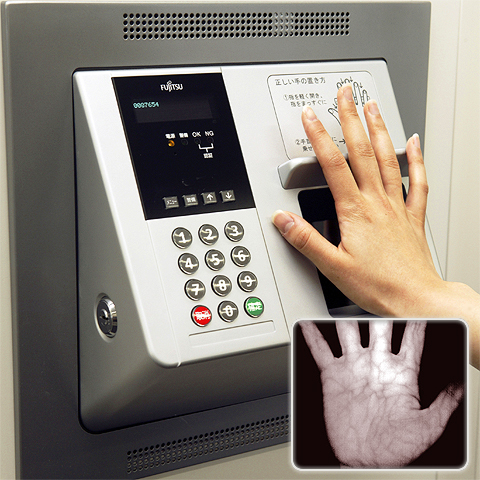Is Palm Vein Authentication the best solution for Biometric Security Access?

Finger-print scanning is too easy to fake, and iris-scanning can be a little fiddly, and yes, if you really want to - you can probably by-pass that with a glass eye too.
The Security Industry has long been searching for a contactless and non-invasive (i.e. non dna-scraping) foolproof biometric security authentication technique that is quick and easy, and difficult to hack or circumvent.
Largely developed by Fujitsu, and now used mostly by US healthcare centres to ward of fraudulent health-insurance claims - by way of identity theft. Palm Vein Authentication uses an infrared scanner to trace the vein patterns of a human palm. A key advantage of this technology is that the subject must be alive, so a chopped off hand won’t do; it’s also sufficiently detailed and unique to make it very difficult to replicate with other props or even mechanical parts.
The Fujitsu scanner pictured above is a rather large industry strength one, but the scanners can be as small as smartphone dongles - pretty much the same outer dimensions of the phone, and less than a couple of inches in height.
I’ve long blogged about the need for an improved biometric technology to replace pin codes, ID cards and the like. As the smartphone rapidly accelerates on its path to absorb most of your daily transactions and interactions - keyless entry, electronic wallet, ID cards, Tickets etc. - this would really seem to be the perfect solution to the current elevated security need we now have.
What with pincodes and login passwords increasingly becoming liabilities, perhaps Palm Vein Authentication is the one-fits-all solution that really works!

Did you find this content useful?
Thank you for your input
Thank you for your feedback
Upcoming and Former Events
Affino Innovation Briefing 2024
Webinar - Introduction to Affino's Expert AI Solutions - Session #2
Webinar - Introduction to Affino's Expert AI Solutions - Session #1
PPA Independent Publisher Conference and Awards 2023
Meetings:
Google Meet and Zoom
Venue:
Soho House, Soho Works +
Registered Office:
55 Bathurst Mews
London, UK
W2 2SB
© Affino 2024




















